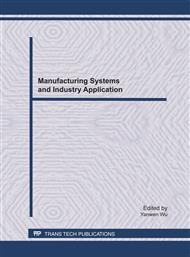p.283
p.289
p.297
p.302
p.308
p.314
p.318
p.322
p.328
An Effective Intrusion Detection Model Based on Random Forest and Neural Networks
Abstract:
This document explains and demonstrates how to prepare your camera-ready manuscript for Trans Tech Publications. The best is to read these instructions and follow the outline of this text. The text area for your manuscript must be 17 cm wide and 25 cm high (6.7 and 9.8 inches, resp.). Do not place any text outside this area. Use good quality, white paper of approximately 21 x 29 cm or 8 x 11 inches (please do not change the document setting from A4 to letter). Your manuscript will be reduced by approximately 20% by the publisher. Please keep this in mind when designing your figures and tables etc.Intrusion detection is a very important research domain in network security. Current intrusion detection systems (IDS) especially NIDS (Network Intrusion Detection System) examine all data features to detect intrusions. Also, many machine learning and data mining methods are utilized to fulfill intrusion detection tasks. This paper proposes an effective intrusion detection model that is computationally efficient and effective based on Random Forest based feature selection approach and Neural Networks (NN) model. We firstly utilize random forest method to select the most important features to eliminate the insignificant and/or useless inputs leads to a simplification of the problem, in order to faster and more accurate detection; Secondly, classic NN model is used to learn and detect intrusions using the selected important features. Experimental results on the well-known KDD 1999 dataset demonstrate the proposed hybrid model is actually effective.
Info:
Periodical:
Pages:
308-313
Citation:
Online since:
June 2011
Authors:
Keywords:
Price:
Сopyright:
© 2011 Trans Tech Publications Ltd. All Rights Reserved
Share:
Citation:


